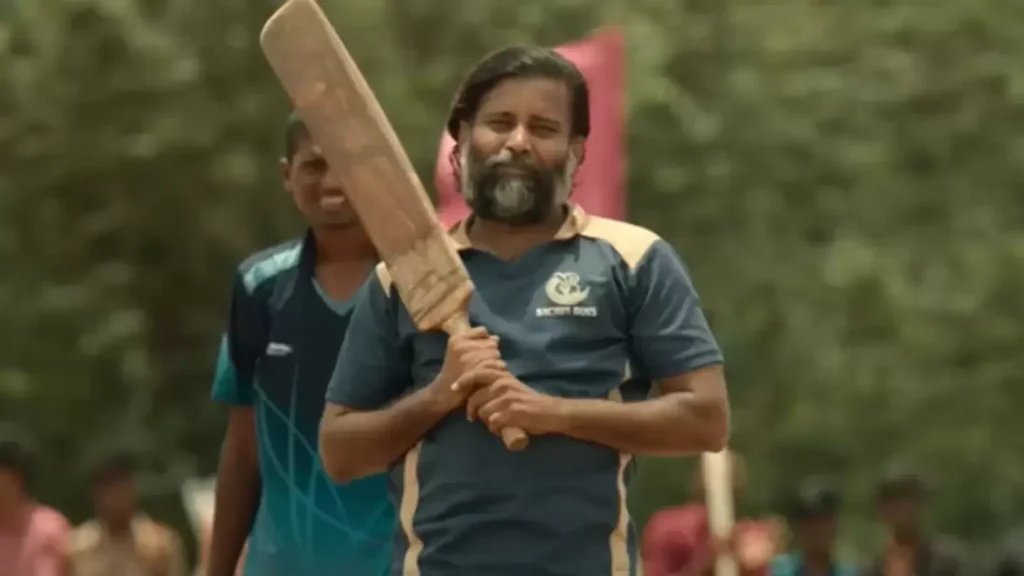The small Tamil film, Lubber Pandhu, has had an extraordinary run at the box office now with the audience flocking theatres to catch this village-based drama. Revolving around cricket, the Lubber Pandhu story showcases relationships, rivalry, romance and village life, giving us a wholesome engaging film albeit with a simple storyline. Reportedly made on a budget of around ₹5 crore, the movie has collected more than ₹25 crore at the box office making it one of the most profitable Tamil films of 2024. (Also read: Cricketer Varun Chakravarthy wants to direct Vijay someday: ‘I have written a story for him’)
However, this is not the first time a movie centred on cricket has found strong resonance with the Tamil audience – this year alone three cricket-themed films hit theatres. Notable films that had cricket as their theme include director Susindheeran’s Jeeva (2014), Arunraja Kamaraj’s Kanaa (2018), S Jayakumar’s Blue Star (2024) and Aishwarya Rajinikanth’s Lal Salaam (2024). So, why does cricket have a strong emotional connect with filmmakers and the audience?
Why cricket works in Tamil cinema
One of the most important aspects is that cricket is a cultural phenomenon in India and particularly in Tamil Nadu where we see children playing gully cricket in cities and villages alike. Most youngsters grow up playing cricket as a leisure sport and filmmakers who have experienced this tend to identify with the theme strongly. Writer Tamizharasan Pachamuthu, who made his directorial debut with Lubber Pandhu (rubber ball), when asked in an interview about why he chose cricket as the theme, he said, “I was inspired by the characters I grew up with in my village. There is always an idol we look up to in our neighbourhood, when it comes to cricket. This story is about that and how ego makes its way into their lives.”
Cut to 2007 when Venkat Prabhu made his directorial debut with Chennai 600028, a cricket-based dramedy. The GOAT director is an avid cricket fan and grew up playing gully cricket on the beach and the playground near his home in RA Puram (pin code 600028), Chennai. The idea for the film germinated from his own growing up years and resulted in a cult classic.
Venkat Prabhu’s brother, Premgi Amaran, who has acted in all his brother’s films including Chennai 600028, says, “My brother, like most people in India, is a huge cricket buff. If you see, every movie of his has some element of cricket in it – in fact, the recent Vijay film GOAT’s climax also revolved around cricket. He especially loves Dhoni and Chennai Super Kings but watches all forms of cricket. When Chennai 600028 came out, we knew the audience would relate to it and enjoy it because of the cricket factor but didn’t expect it to become the blockbuster it did.”
The advent of the Indian Premier League (2008) and the Chennai Super Kings (CSK) team led by Captain MS Dhoni was another important factor that added to the Tamil audience’s love for cricket. Nicknamed Thala (head), Dhoni has become a cult figure in the south state and CSK’s success naturally fosters a deep sense of pride and loyalty among its fans. Supporting CSK gives the fans a sense of regional pride, and the team’s yellow jersey has become a symbol of unity and belonging for Tamil cricket fans.
Another aspect that makes cricket a good theme for a film is that it has the ability to showcase themes of caste and/or religious discrimination, segregation, inequality, rivalry, and even romance, using the players and teams. Historically, upper-caste individuals have dominated Indian cricket, particularly at higher levels, due to better access to infrastructure, coaching, and resources. Dalits and other marginalised communities have often been underrepresented, reflecting the inequalities prevalent in Indian society, and Tamil cricket-based films often showcase this.
Cricket as a medium to explore cast discrimination
Tamil Nadu has a strong political and social history of anti-caste movements, led by figures like Periyar, and the Dravidian Movement. Using cricket as a theme to explore caste discrimination resonates deeply with the state’s history of challenging caste hierarchies. And cricket is seen as a great equaliser, uniting people across caste, class, and regional divides. Director A Jayakumar’s Blue Star, produced by director Pa Ranjith, is an ideal example of this. The movie, which became a superhit, explored caste dynamics and oppression faced by Dalits in society.
Cricket matches, like films, have emotional highs and lows that fans and the audience experience and enjoy. And Kollywood filmmakers, who perfectly capture this with their well-crafted stories, are highly appreciated and lauded. Ultimately, cricket and cinema are two of the biggest sources of entertainment in India and when the two are combined successfully in a highly engaging film, then the result is a perfect six.

